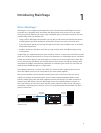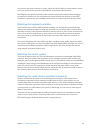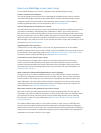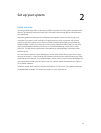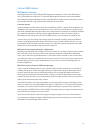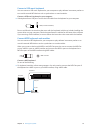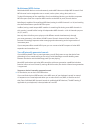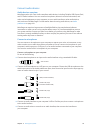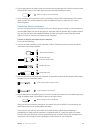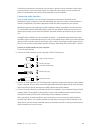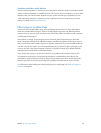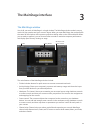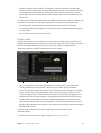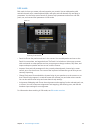Chapter 2 Set up your system 17
Multichannel MIDI devices
Multitimbral MIDI devices can simultaneously receive MIDI data on multiple MIDI channels. Each
MIDI channel can be assigned a tone or sound, such as piano, strings, bass, and so on.
To take full advantage of the capabilities of such multitimbral devices, you should use separate
MIDI Out ports (from the computer MIDI interface to the MIDI In ports) for each device.
MainStage is capable of channelizing MIDI data (routing it to MIDI channels 1 to 16) and sending
the channelized data to specic MIDI Out ports.
In eect, having a multi-output MIDI interface is something like having more MIDI channels. In
this scenario, it would be like having 64 independent MIDI channels—with 16 channels per port
(A, B, C, and D).
Not only does this allow you to play up to 64 dierent sounds simultaneously through
your tone generators, it also allows full MIDI control for each channel of each device. This
becomes increasingly important when arranging and orchestrating such a large number of
instrument parts.
If your computer oers several MIDI inputs, you can connect the MIDI outputs of other MIDI
expanders and controllers to it.
Turn o internally generated sounds
If your MIDI keyboard is also a sound generator, you will likely want to stop the device from
generating its own sounds while you are using it with MainStage, to avoid doubling notes
between the device and the MainStage patch you are playing.
Most MIDI synthesizers and other MIDI controllers with tone generation capabilities include a
function known as Local Control. By turning o this function, the device’s internal tone generation
is suppressed.
Suppress a device’s internally generated sounds
m On the device, turn on the Local O function.
If you can’t nd the Local O function in the MIDI menu of your keyboard, consult its manual
on sequencer use. Some keyboards allow you to select from Local, MIDI, or Both for each of
their Parts (individual MIDI channels/sounds in multitimbral MIDI devices). The MIDI setting, if
applicable to your keyboard, is the equivalent of Local O.



